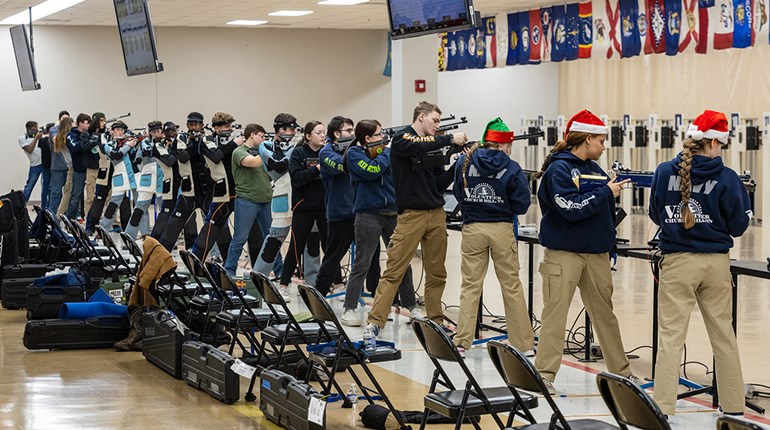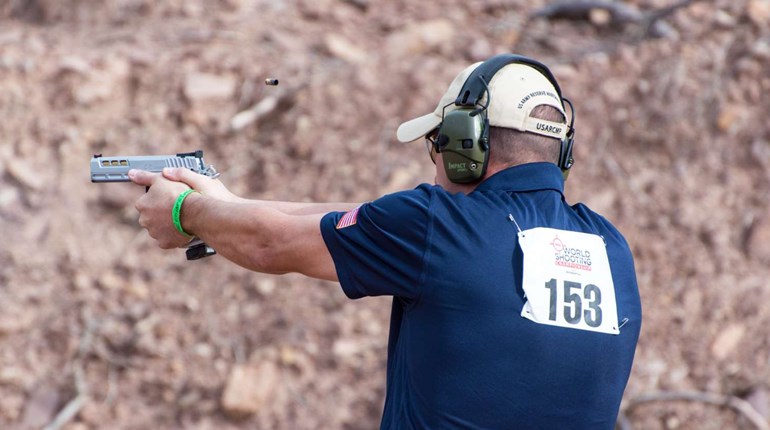
"Shooters tend to be competitive people who want to make the most of every shot," says Monica Devlin, marketing coordinator for Kestrel Pocket Weather Meters. "The Kestrel allows competitive shooters to account for everything that affects the flight of a bullet: wind speed, direction, humidity, temperature and crosswind calculation."
If you're not familiar with the Kestrels, you're in for a real treat. These handy units are a full-featured weather station, providing all sorts of valuable meteorological information in real-time from a unit no bigger than a handheld GPS. The most prominent feature on any Kestrel is the little black impeller, a patented tool to measure wind velocity quickly and accurately. A large LCD panel displays readings and buttons—from a trio on the base models up to eight on the more advanced units—allow quick user input. Weighing in at half a pound, these handhelds pack a lot into a small package.
Lest you think these units are merely technological toys for the gadget freak, it should be pointed out that snipers in the U.S. military name Kestrels among their favorite accessories. "Kestrel Pocket Weather Meters have been at the top of the military's 'most wanted' list for years," says Devlin. "Our Kestrel NV line, which features a dim red backlight easily readable in low- to no-light operations, is a standard tool for snipers worldwide. The 4500 NV gives you wind speed and direction with its built in digital compass, and it calculates crosswind and headwind/tailwind with reference to a user-set target heading and stores the information along with all the other environmental readings in its 1,400 data point memory." The dim red backlight doesn't spoil night sight and minimizes the chance unwanted eyes will spot it. The NVs are drop tested to military specs and every Kestrel is made in the U.S.A. and backed by a 5-year warranty.
Despite the obvious use to professional long-range shooters in the combat zone, the utility of these devices is not limited to military personnel. We all know how much the weather affects any outdoor activities, from a day at the beach to an afternoon on a bass boat to an evening in a tree stand in chilly November. Gone are the days of a simple wet finger poked up into the breeze or a few pieces of grass tossed into the air to gauge wind direction and speed.
"Hunters can improve their game by tracking animal activity with barometric pressure trends and staying aware of dangerous conditions while out in extreme temperature for hours," Devlin points out. It goes without saying that the animals hunters seek are sensitive to changing weather conditions in a way no human ever will be. The Kestrel can do a little to help hunters outfox their quarry, but, as Devlin mentions, it's not only the chances of a successful hunt that weather can impact; the hunter's comfort and safety are also on the line. And this last fact doesn't only apply to hunters. Hikers, boaters, skiers and any other outdoor enthusiast are all at the mercy of the weather, and knowing what Mother Nature has in store is vital. So often the sensational news reports we see about people stranded, lost or even killed in the wilderness begin with a bad decision regarding weather conditions.
Of course, shooting is our main concern here and we all understand the way weather can seem to go out of its way to mess up our long-range marksmanship. The ability to quickly gauge environmental conditions, even as they're changing, can allow shooters to compensate for tough situations when the shot counts. Also, other electronic gear is able to accept input from Kestrel meters. The CheyTac Civilian Advanced Ballistic Computer System (CABC), for instance, can utilize the Kestrel's real-time data to fine-tune ballistic calculations on the fly. A few short years ago, this was the stuff of science fiction. Now it's available on the consumer market for reasonable prices.
With an MSRP of only $129, the Kestrel 2000 measures current, maximum and average wind speed along with air, water and snow temperature, plus it calculates wind chill. For a relatively limited investment, outdoorsmen and women can have the most important meteorological readings at their fingertips. These days, when so many won't venture out of sight of their camp without a GPS, maybe weather should get the same consideration.




































